Bearing Witness to Migration Nightmares
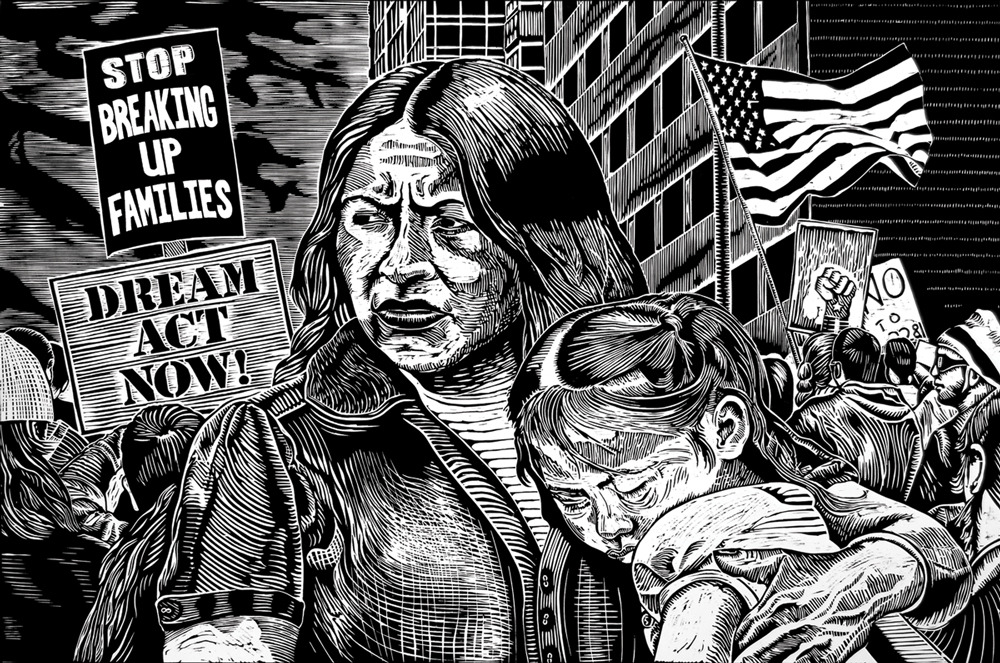
Raoul Deal
As we all follow the horrifying details of the administration policy of forcibly removing children from their parents, I am posting this essay to suggest one way forward, we in the creative community must continue to make visible the nightmares of what is happening to immigrants forced from their homes by violence, gang wars and climate change.
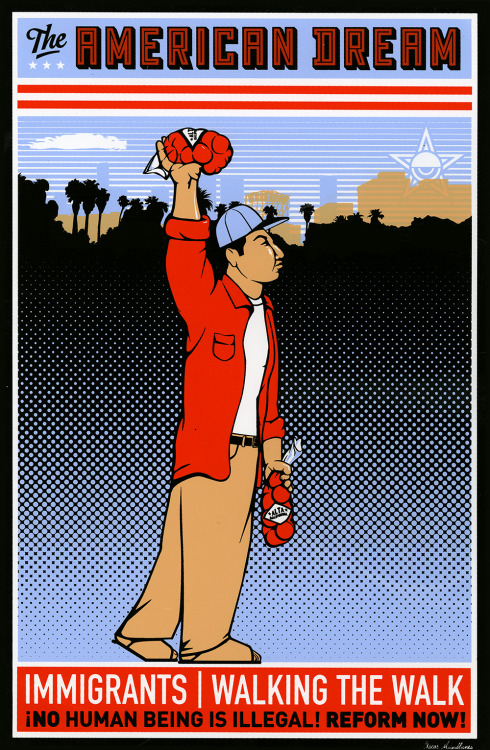
Oscar Magallanes
Prelude
Six years ago, a young woman walked into my office in the Grand Central Building on Pioneer Square. She had seen a big poster on the open door for my just-published book, Art and Politics Now, Cultural Activism in a time of Crisis. She asked me if she could work for me! I explained to her that I was simply a writer and had no employees.
Then she told me her story: she had just been released from the Detention Center in Tacoma. As a young mother she supported herself, her own mother and her young child. She worked in a tech job, and had been making a good salary, when the police stopped her on the road because she had a taillight burned out. But then they checked her status (at that time police were cooperating with ICE) and discovered she was undocumented. They immediately sent her off to the Northwest Detention Center for deportation.
In 2012 she was able to post bond and get out without a monitoring device (which now must be rented for a huge fee and re-charged every day), but they had taken away her driver’s license and other documents. She was on her way to a lawyer down the hall to try to get working papers. At that time I had never heard of the Tacoma Detention Center. She urgently asked me to publicize the terrible conditions there.
Over the next two months, I encouraged her to join me at various immigration events, including a May Day march. For obvious reasons, she did not want to make a speech, but I introduced her to several groups supporting immigrants. Then suddenly she disappeared and I never saw her again. I have no idea what happened to her. I saw her lawyer a few years later and she told me that her clients often disappear.
Part I Exhibitions
But this impressive young woman had planted the seed that has led me to learn about the dreadful conditions at the Northwest Detention Center (NWDC) in Tacoma, to join the resistance there, and to organize art exhibitions about immigration, accompanied by music, poetry, speeches by activist leaders, and community organizers.
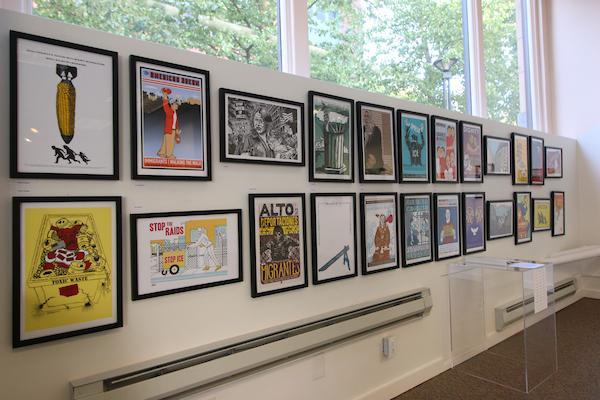
I began by acquiring and framing thirty dramatic prints of the Migration Now portfolio published by Justseeds/CultureStrike, both activist printmaking collectives. I have shown these compelling works by nationally known artists six times in venues ranging from the University of Washington School of Social Work to the little known Karshner Museum in Puyallup, Washington. The imagery is as resonant today as when the artists first created it five years ago. No one looking at them needs an art background to understand the issues of immigration ranging from the large economic forces such as drug wars and climate change to the personal challenges and day-to-day fears.
Every artist wrote an explanation of their art so their intentions were clear. For me that clarity is crucial: this is not the time for subtlety. But these prints are eloquent works of art. Even as they address an issue directly, they do so in ways that elevate the subject from a polemic to a poetic invocation.
For example in the work illustrated at the top of the post, Raul Deal declared: “On a daily basis I witness the awful toll that a broken immigration system takes on Latino students, friends, and their extended families. Nobody is untouched.”
Along with that project, I curated three exhibitions. “Migration” at the Columbia City Gallery with three artists, Deborah Faye Lawrence, Tatiana Garmendia, and Cecilia Alvarez.
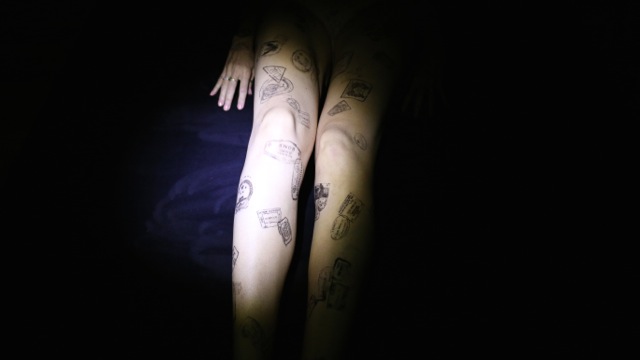
Tatiana Garmendia Border Crossing,still from video
I reached out to twenty artists in “Liberty Denied: Immigration, Detention, Deportation” at the Museum of Culture and the Environment, Central Washington University .
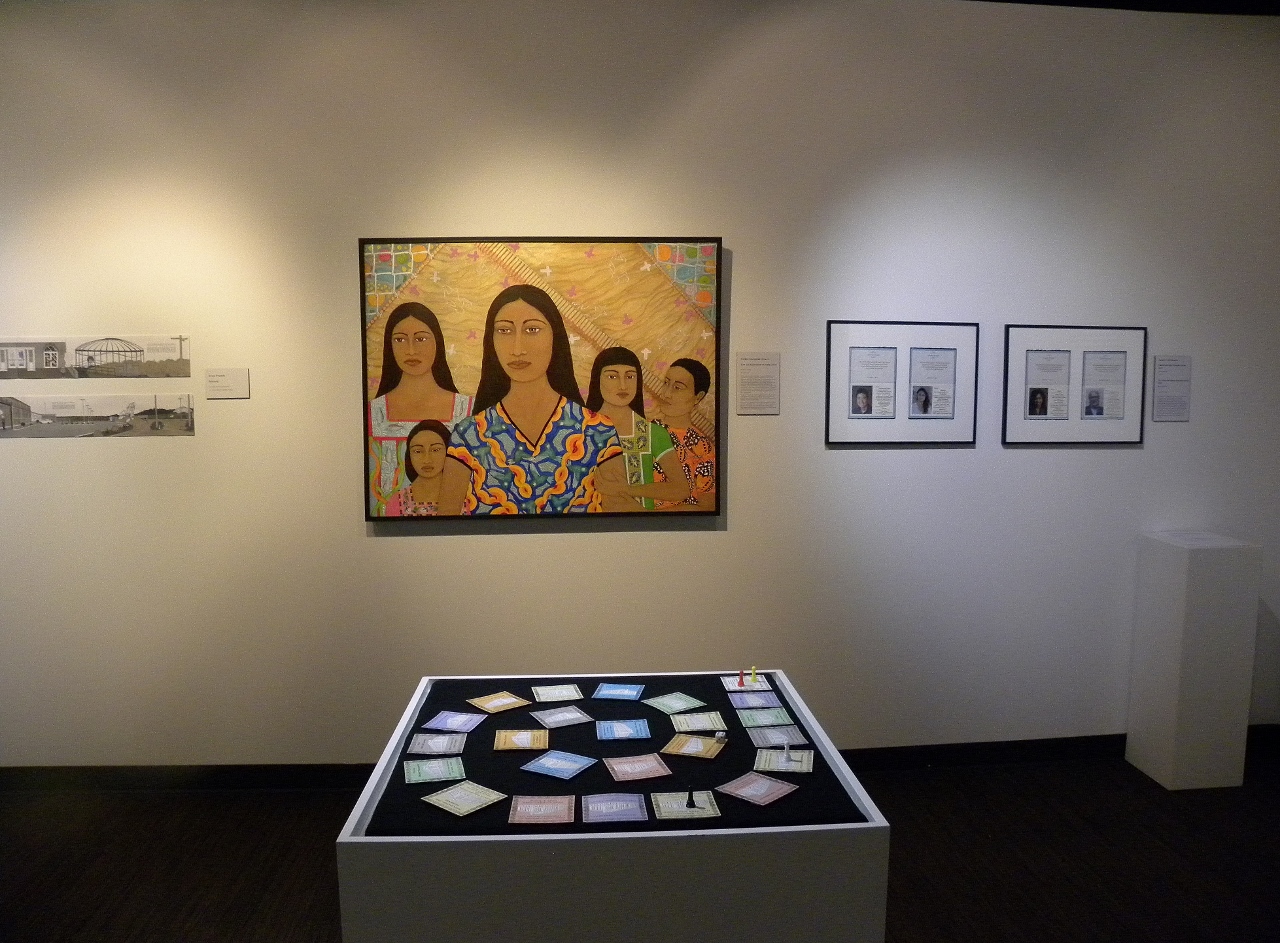
center Cecilia Alvarez, foreground Christian French INS game, background right Carina del Rosario
“Immigration: Hopes Realized, Dreams Derailed” in Tacoma, Washington at the Spaceworks Gallery. Here is an installation shot including Eduardo Trujillo reciting spoken word at one of the events See this performance video
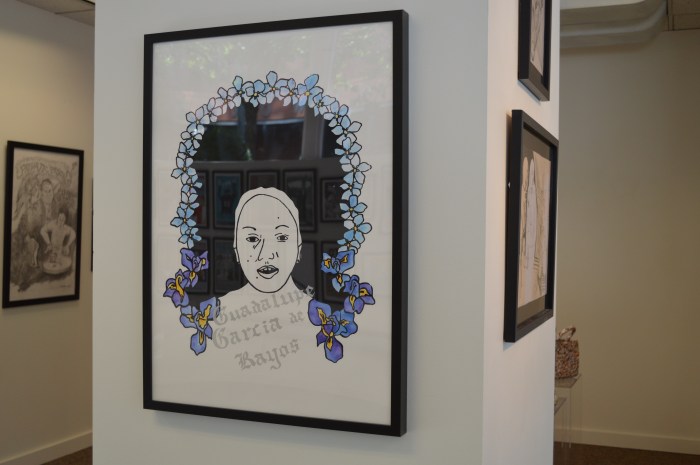
Andrea Eaton Guadalupe Garcia
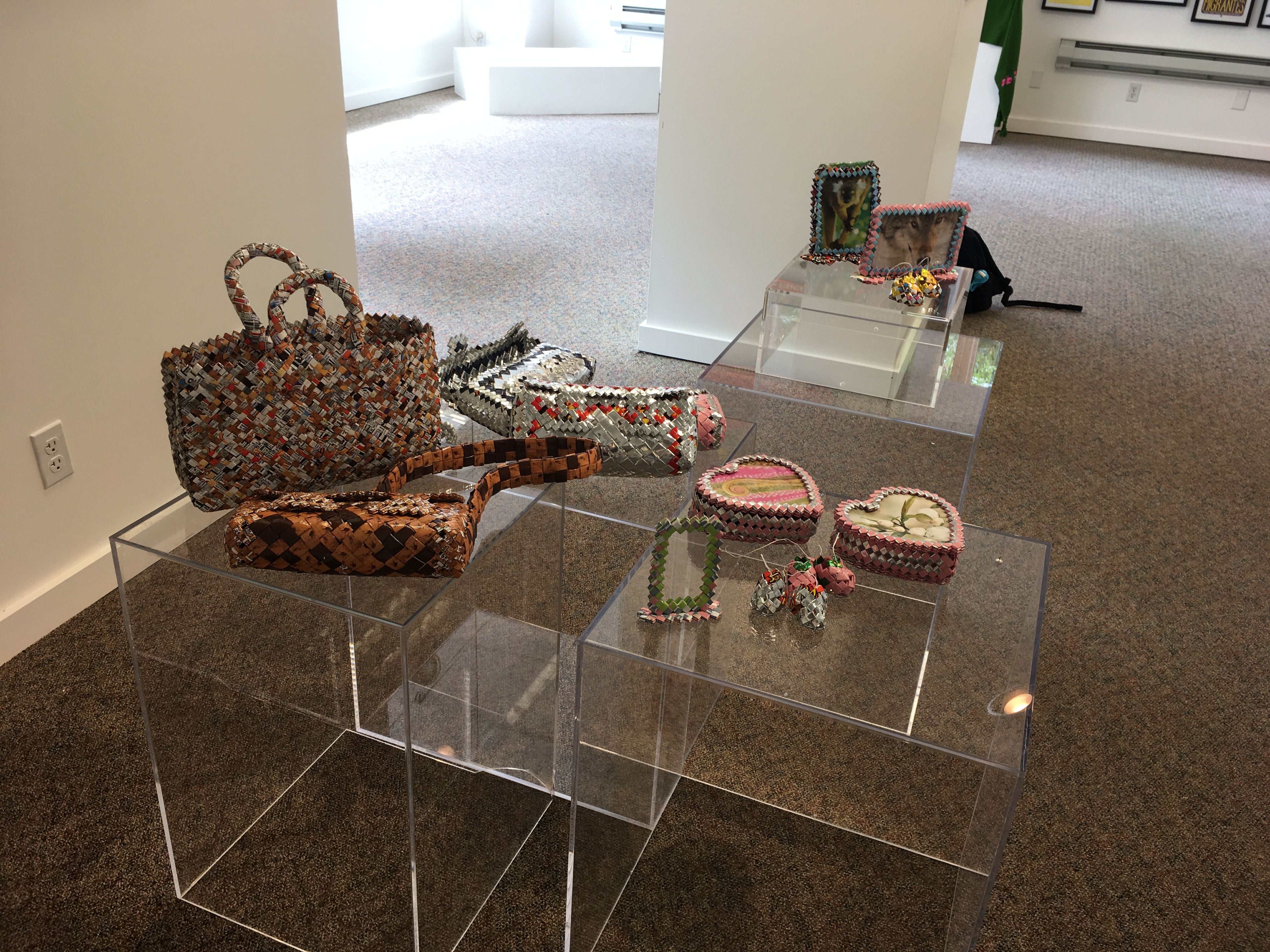
Pavel Bahmatov
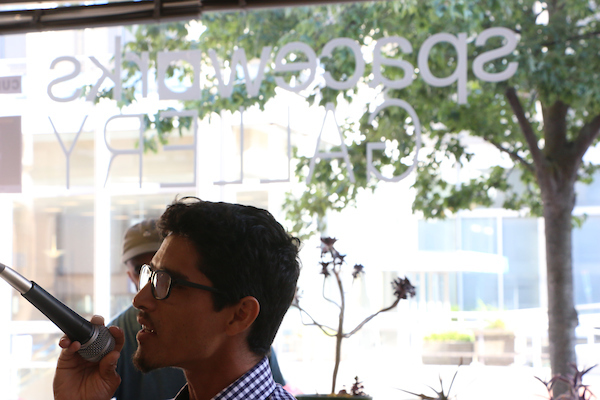
Eduardo Trujillo
With each exhibition my understanding of the issues increased, along with my horror. The more I learned, the more urgently I wanted other people to understand the situation.
Part II Activism

My education continued with the group “Aid To Immigrants Northwest,” (AIDNW) an organization that provides assistance to recently released detainees, right outside the Detention Center in Tacoma. They hold bi-monthly roundtables with programs on topics not generally covered in the public press. For example, at one meeting that I attended they talked about the fate of children whose parents are detained or deported. Another explained the difficulties of the visitation rights of families, with changing visiting hours and detainees moved to far away facilities. At a third roundtable the discussion focused on the difficulty and high cost of phone service for detainees.
The NWDC, they explained, had 1500 beds, making it the fourth largest detention center in the country. Run by the for-profit corporation GEO, in contract with Immigration and Customs Enforcement (ICE), NWDC is one of the biggest moneymakers in the immigration system. GEO pays detainees one dollar a day to do all the work of the Center and requires different color uniforms, blue, orange, red, green, according to their level of “threat,” generating divisiveness among the detainees.
AIDNW provides released detainees basic necessities such as clothing: they have only the clothes on their backs when detained, if they are released in the winter and have been detained in the summer, they will freeze without additional clothes. In addition, AIDNW provides temporary housing and transportation assistance.
Through AIDNW I signed up to be a visitor at the Detention Center. They matched me with a grandmother about my age. Visiting her was like visiting a prison, multiple security layers, and speaking through a partition on a telephone, as though she were a dangerous criminal. She told me of her problems with the diet, high salt, high sugar, making her sick, and raising her cholesterol. She had to wait for weeks for an appointment for medical attention. Even more important though, she had lived in the US for decades, she had a home and family here. Tragicallly, both her daughter and mother had died since she was detained. She longed to be reunited with her grandchildren.
Detainees do not have a right to a lawyer, since lacking papers is a civil offense, they can only get a hearing with a judge. If they are lucky, a volunteer lawyer represents them, but most of them have to defend themselves, even if they don’t speak English. (One elderly detainee described how she couldn’t even read the documents, since they had taken away her glasses.)
The detainees, like characters in a Kafka novel, live from hearing to hearing, often spending months or even years in the windowless, inhumane facility. Their other choice is to go directly into deportation. The buses wait outside the Northwest Detention Center to take them to the airport to be flown off, at vast expense, to a country they often have not lived in since they were small children. One detainee, Louis Rodriguez Arenival, made this picture of deportation.
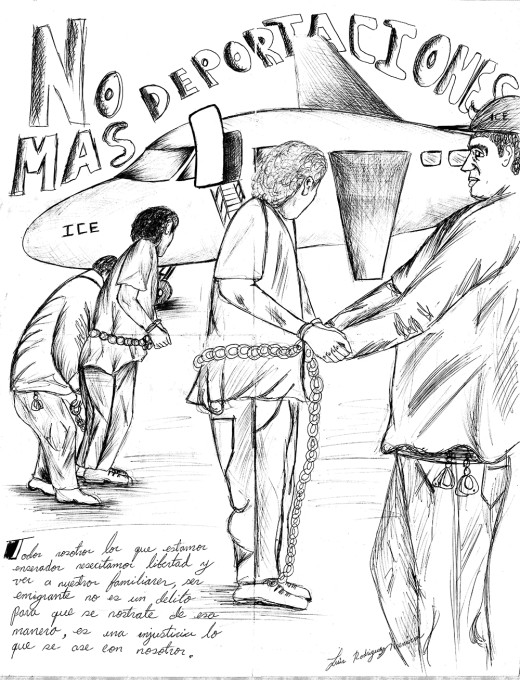
The written text in the lower left says: “Todos nosotros los que estamos encerrados necesitamos libertad y ver a nuestros familiares; ser emigrante no es un delito para que se nos trate de esa manera, es una injusticia lo que se hace con nosotros.” The translation is “All of us who are locked up need freedom and to see our relatives; being an emigrant is not a crime, to treat us that way, what is done to us, is an injustice.”
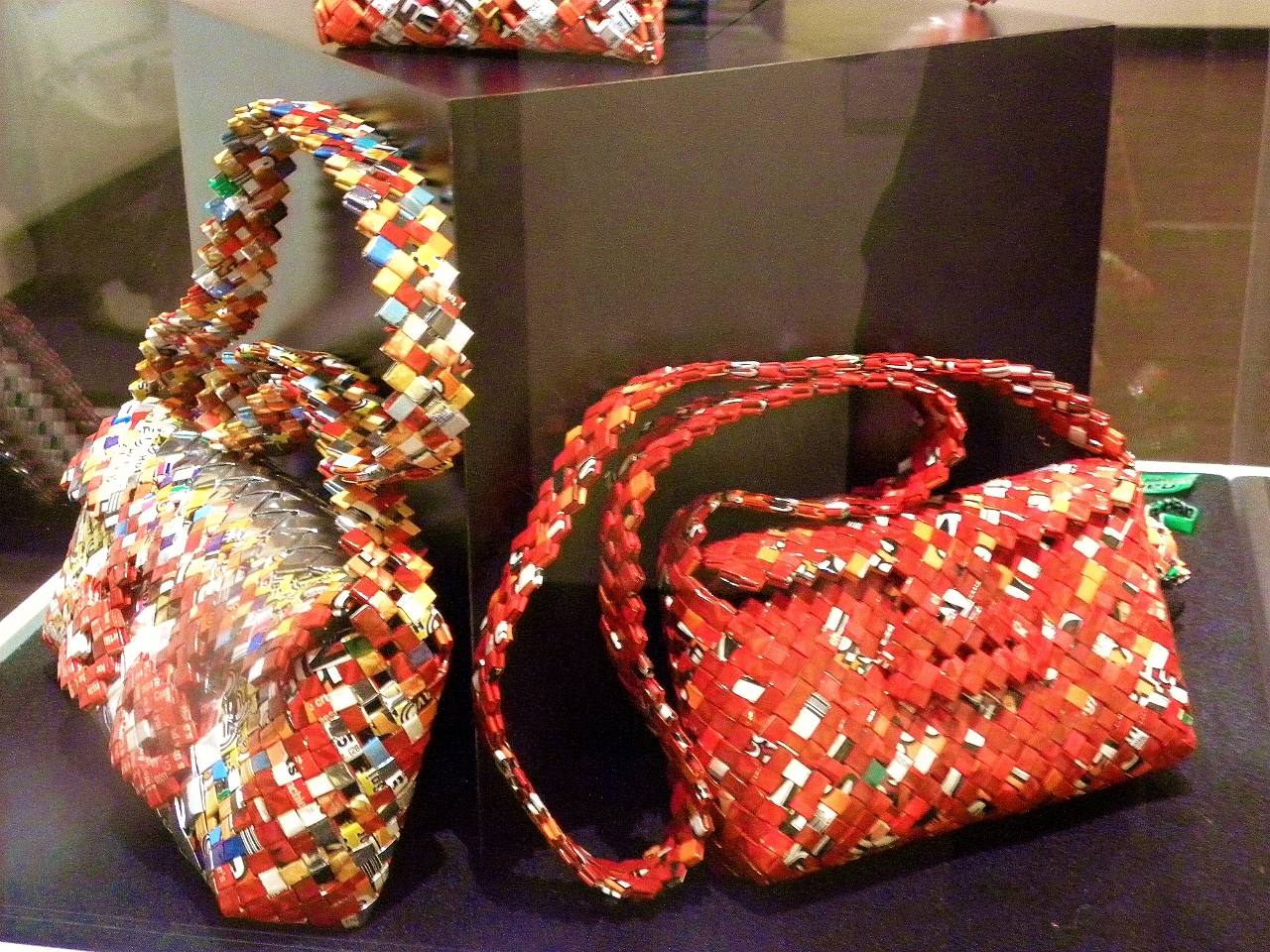
Another current detainee, Pavel Bahmatov, sent art to two of my exhibitions through the intermediary of the Northwest Detention Center Resistance “pen pal” project. Pavel, along with others, alleviated the extreme boredom of the center, which unlike federal prisons has no programming at all, by making art woven from recycled trash such as ramen noodle wrappers. Here is an example of some of his beautiful work. He is originally from Uzbekistan, so there is, to me, definitely a central Asian sensibility in the colors and patterns.
Pavel had a bail hearing with a pro-bono lawyer from the excellent Northwest Immigrant Rights Project, who explained in detail why he deserved to be released. Then the Judge listened to the prosecution declare he was a threat to the community, and denied bail in about thirty seconds. Bahmatov was transferred to a facility in the Dalles, NORCOR, which is actually a county jail. The facility collects daily payments from ICE for the detainees there, without providing even the minimal services of the NWDC. Bahmatov joined a hunger strike there, because there were no other options left to him. Hundreds of local jails across the country are cashing in on the ICE bonanza.
I urgently wanted to find more ways to understand the nightmare of migration policies, so in May 2016 I joined the poet, Raul Sanchez, in organizing a booth before the May Day March. We invited adults and children to write poetry and create artwork in response to the question, hung in a big banner over the booth “How Have Immigration Laws Affected You?/De Que Maniera Le Han Affectado Les Leyes Immigraciones? ”
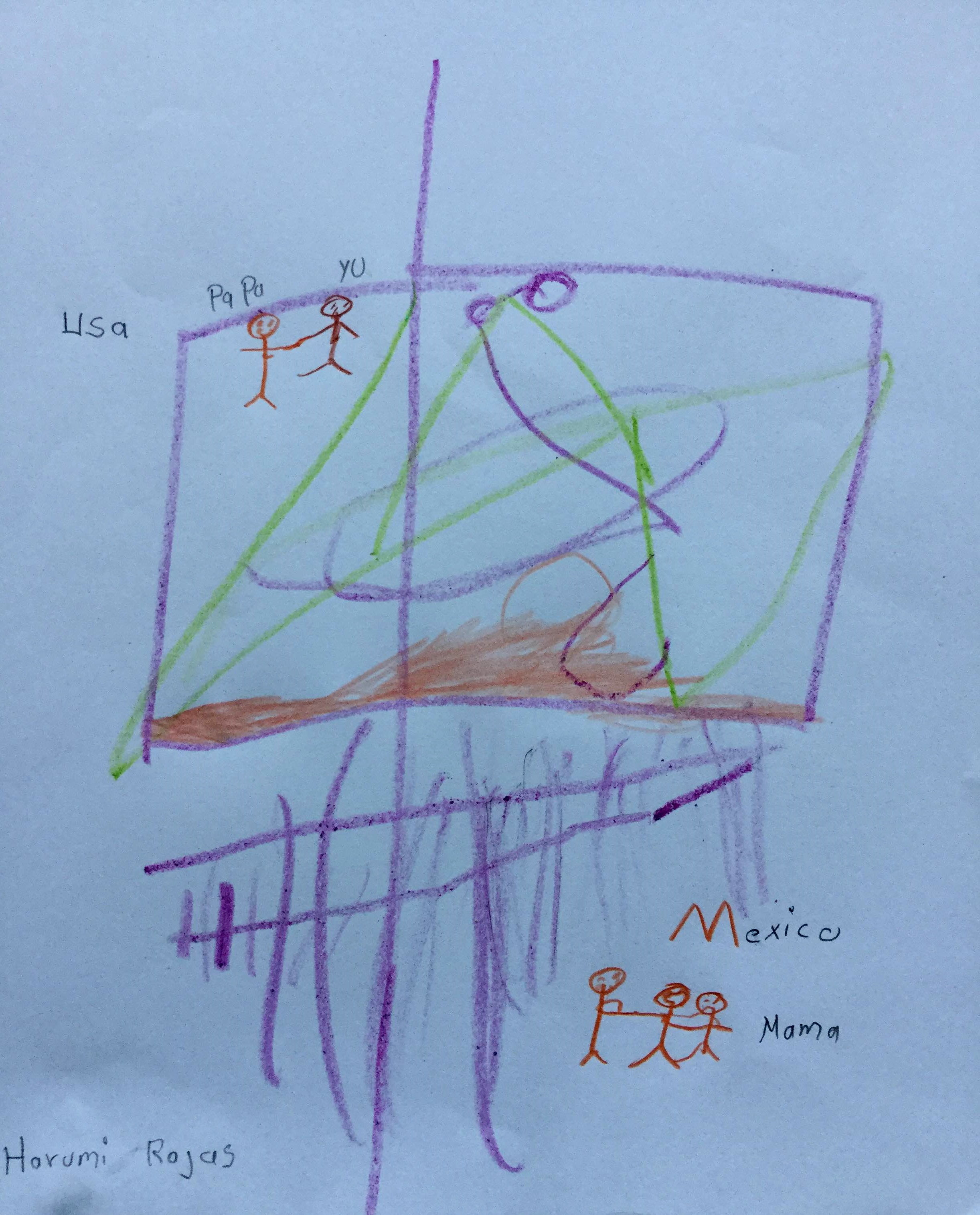
We were deeply moved by the creativity of those who participated. The drawing illustrated here, by a very young child depicts her mother in Mexico at the bottom right, and herself and her father in the top left, separated by two fences.
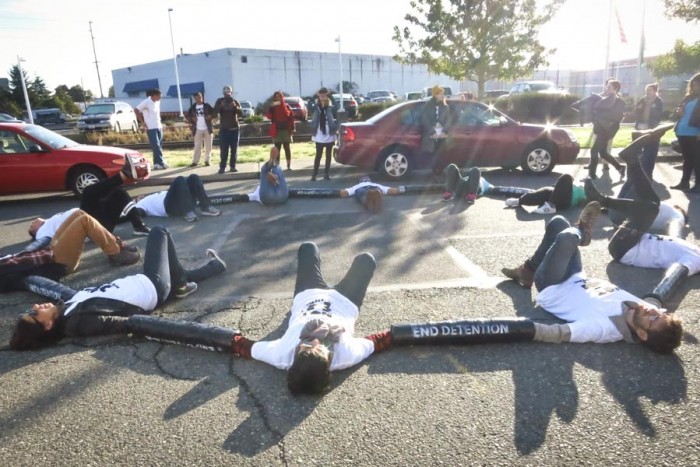
In the last five years, I have also joined protests organized by the Northwest Detention Center Resistance (NWDRC). They gather weekly outside the detention center. Here is one of their protests.
The corporation GEO makes enormous profits there through the “volunteer” labor of the detainees, while perpetuating deprivations that are against the law. People who have gone from federal prison to detention often comment on how much worse the conditions are in detention.

The NWDCR protests call attention to the human rights violations, and support hunger strikers, detainees and deportees (sometimes with a cross border telephone call). At one protest, the Vashon-based Backbone Campaign flew a banner that floated over the center reading “Who Would Jesus Deport?”, infuriating the officials inside.
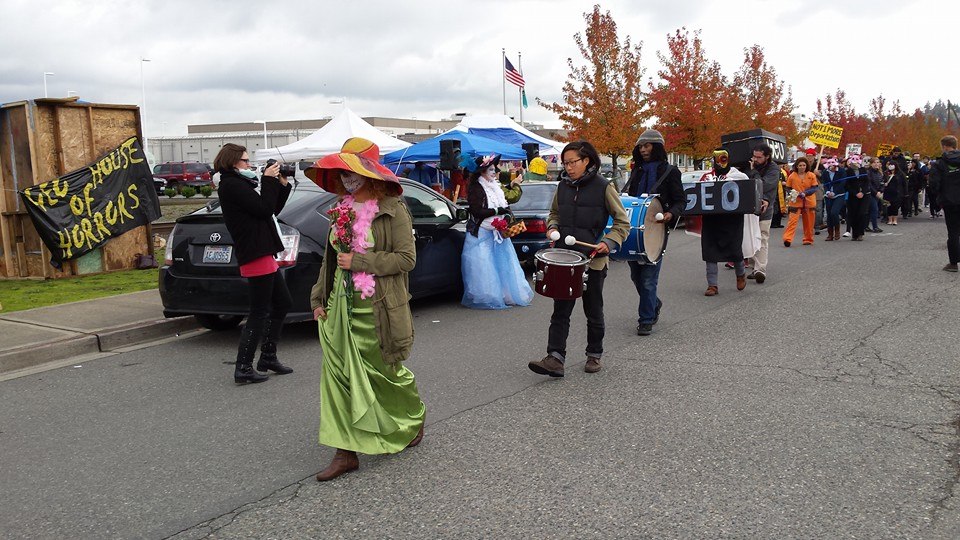
On the Day of the Dead in 2014 Maru Mora Villalpando, a leading Northwest Immigrant Rights activist, dressed up as Calavera Catrina and led a march protesting the conditions in the Center, complete with the GEO House of Horrors ( scaled to the size of a solitary confinement cell) and gravestones marking “families ripped apart” and “orphaned by ICE.”
Villalpando is currently threatened with deportation herself in a nationwide ICE action that targets activist immigration leaders.
Part III Art joins Activism
In the summer of 2017, my activism and art curating came together at Spaceworks Gallery in Tacoma on the project “Immigration: Hopes Realized, Dreams Derailed.” Perhaps because the gallery was located only one mile from the Northwest Detention Center, the exhibition itself, as well as the two evenings of performances in the intimate space, were deeply affecting. The artists, poets and performers included political activists, undocumented immigrants, former detainees, current detainees, DACAs (Delayed Action for Childhood Arrivals), college honors students at University of Washington Tacoma, who and never made art before, self- taught artists, and professional artists.
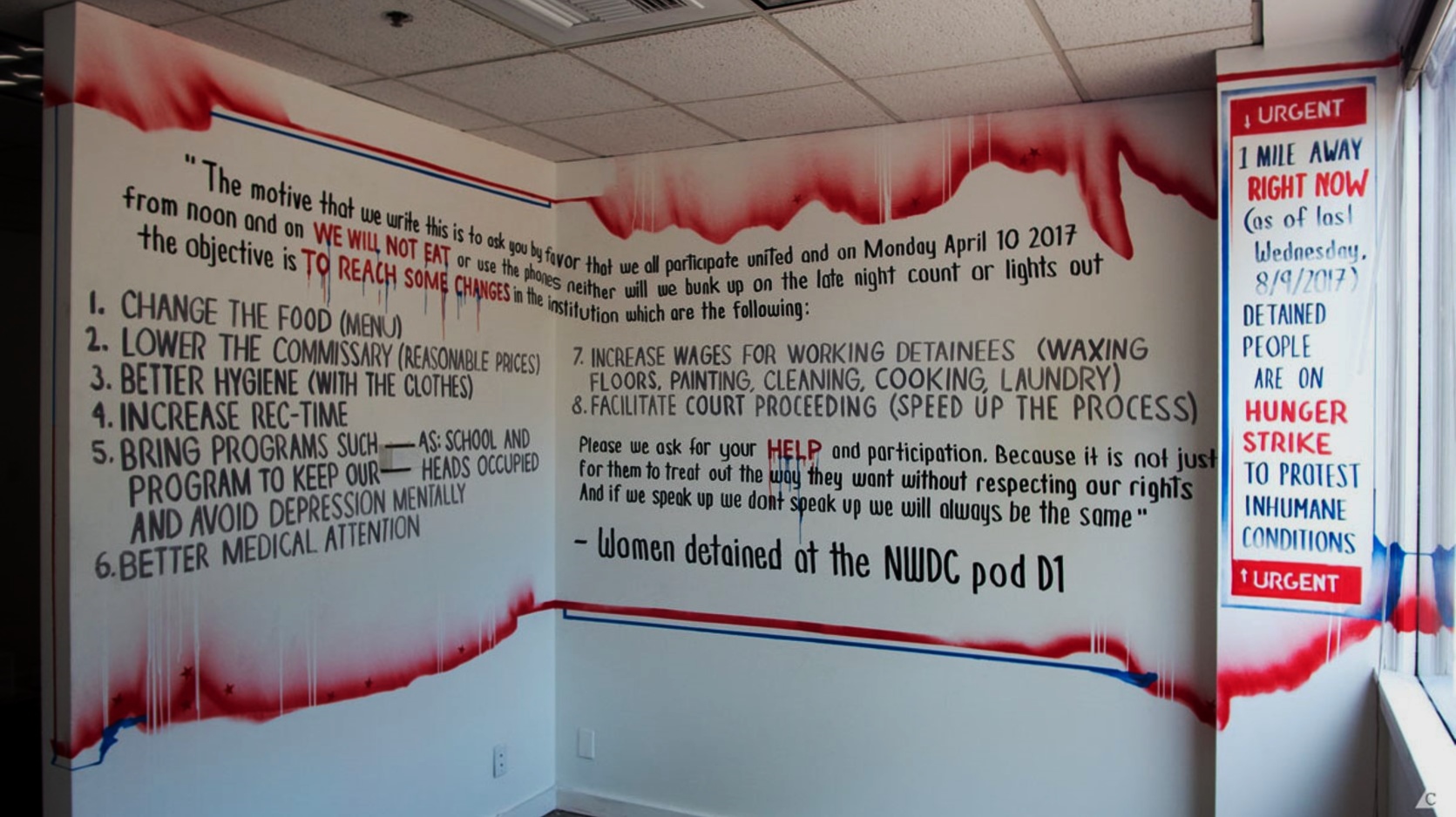
Street muralist David Long created a painting over two walls that listed in bold lettering all the demands of the hunger strikers including improved food, better medical services and hygiene, increased recreation, programming “to keep our heads occupied and avoid depression,” increased wages, and better facilitation of court proceedings.
Spaceworks Gallery is a small community-based space with big windows on the street. People outside stopped to listen to the heartfelt musical performance of former detainee Eduardo Trujillo. He describes himself as “a passionate refugee who seeks a way to bring peace of mind to those incarcerated and or in fear of deportation.” Eduardo brings hope to people through music and spoken word. You can hear him as well as see the exhibition at: https://vimeo.com/226673443
Behind the facts and statistics of immigration and detention, I have learned personal stories of mothers, fathers, children, aunts, uncles, grandmothers and friends who live in fear every time they wake up in the morning, but resolutely go to work, care for their families, and maintain hope. Young people live constricted lives because they lack social security numbers, drivers’ licenses, even library cards. The Delayed Action for Childhood Arrivals (DACA) has given some immigrants a way forward, but the program is threatened with cancellation and has become a political football for draconian immigration legislation.
At the same time, the deportation of parents makes orphans and/or exiles of thousands of citizen children every year. Hardworking families saving money from two or three minimum wage jobs lose it all to an unsavory lawyer. Savings for a college education goes to enable a deported father to return to his home and family.
But there are also success stories, stories of resistance, of defiance, of courage. These are even less reported in the media, more frequently stories we don’t hear. I am so thankful that the young woman who stopped in my office six years ago, woke me up to an invisible nightmare that I could play a small part in making visible through art and activism. Above all, I have been profoundly moved at the courage of immigrants as they continue to demand justice, the return of their loved ones, and a means to legal citizenship. Here is a poster from the excellent workers organization Casa Latina demanding an end to wage theft.
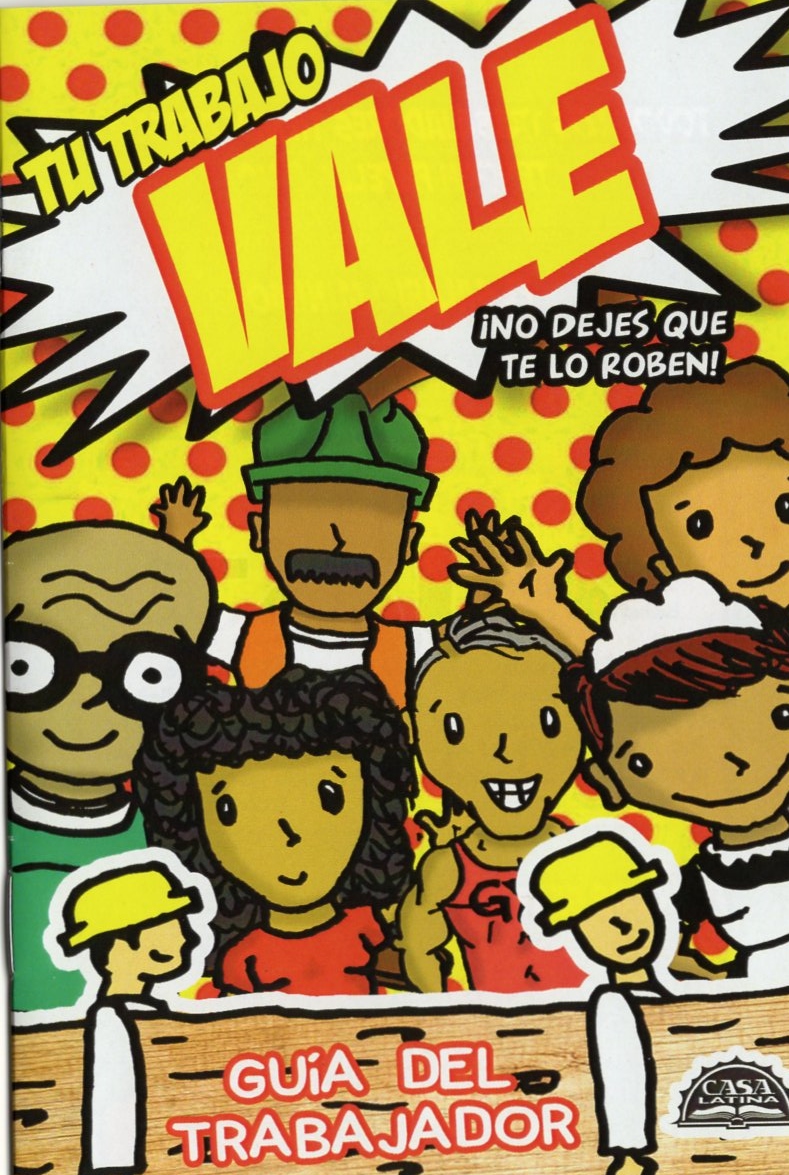
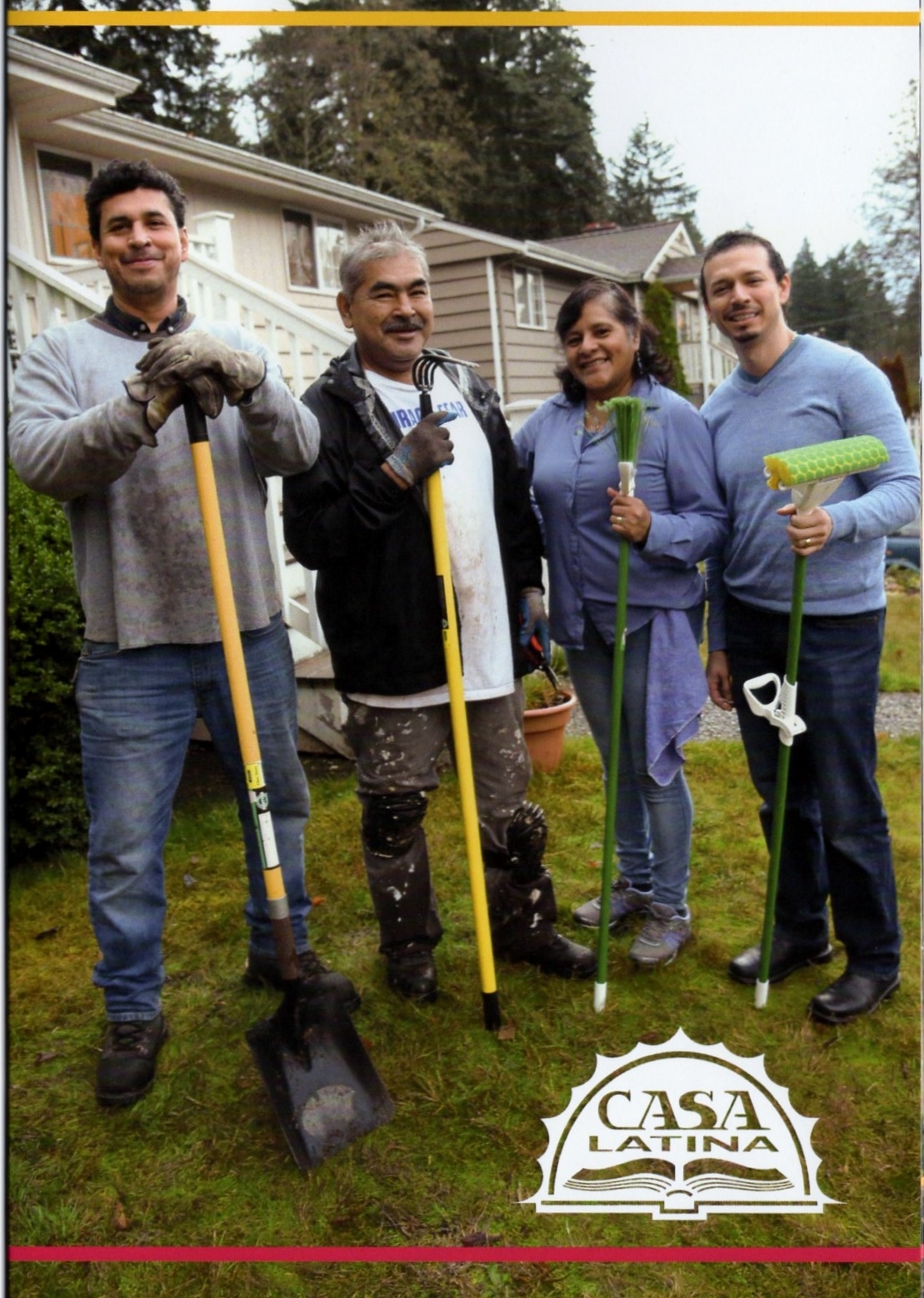
This entry was posted on May 10, 2018 and is filed under Uncategorized.








